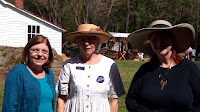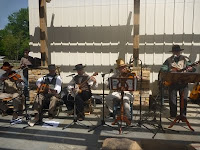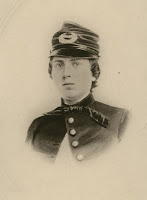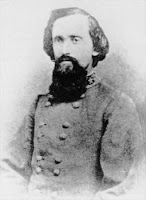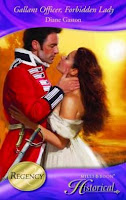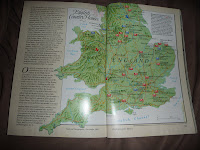 May 7, 1821, 189 years ago, on the island of St. Helena, the great Napoleon Bonaparte died. An autopsy at the time declared that Le Empereur died of stomach cancer, as had his father. Case closed. He was buried in an unmarked grave on the island, unmarked because the English wanted the marker to say merely “Napoleon Bonaparte” and his faithful entourage refused to allow that.
May 7, 1821, 189 years ago, on the island of St. Helena, the great Napoleon Bonaparte died. An autopsy at the time declared that Le Empereur died of stomach cancer, as had his father. Case closed. He was buried in an unmarked grave on the island, unmarked because the English wanted the marker to say merely “Napoleon Bonaparte” and his faithful entourage refused to allow that.
But did he die of stomach cancer? An important man like that, just getting sick and dying? Who would believe that?
Bring on the conspiracy theorists!
In the 1950s the memoirs of Napoleon’s valet were discovered and it led one man to question whether Napoleon might have been poisoned. Technology even offered proof. An article in Nature in 1961 offered the evidence that high levels of arsenic was found in samples of Napoleon’s hair which had been taken as keepsakes upon his death.
Some even claimed to have discovered his murderer– an opportunist named Count de Monthelon. The plot thickens when it came to light de Montheon’s wife left St. Helena shortly before Napoleon’s death, after having given birth to an infant surmised to be Napoleon’s. A Love Triangle, perhaps? Or part of the plot to get Napoleon to put de Monthelon in the will?
Then others offered other reasons for high levels of arsenic– the pomade he used on his hair, the wallpaper at his estate on St. Helena.
In 2007, scientists took another look at the physicians’ descriptions of Napoleon’s autopsy and Bingo! The descriptions were consistent with stomach cancer…Most likely Napoleon died of what the officials said he died of 189 years ago.
But! Does that prove there wasn’t a conspiracy???

 It was known that Napoleon, in his lifetime, occasionally used stand-ins. One of his stand-ins, Pierre Robeaud, disappeared in 1818. Robeaud purportedly had stomach cancer and traveled to St. Helena to switch places with Napoleon. This version has Napoleon flee to Verona and assume the name Revard. It even gives him a tragic, heroic end–Falling to his death in 1823 die trying to climb the walls of Castle Schonbrunn in Austria in an attempt to see his ill son.
It was known that Napoleon, in his lifetime, occasionally used stand-ins. One of his stand-ins, Pierre Robeaud, disappeared in 1818. Robeaud purportedly had stomach cancer and traveled to St. Helena to switch places with Napoleon. This version has Napoleon flee to Verona and assume the name Revard. It even gives him a tragic, heroic end–Falling to his death in 1823 die trying to climb the walls of Castle Schonbrunn in Austria in an attempt to see his ill son.
Yeah. That’s a lot more credible than the great Napoleon merely dying of cancer….
So, tell me? Why do we so easily believe Conspiracy Theories? You know we do. We’re much more interested in intrigue, secrecy, drama, and conspiracy than common sense. Explain this to me, please!
(Don’t forget! I’m Blogging at Diane’s Blog on Thursday and giving away a signed copy of Gallant Officer, Forbidden Lady to one lucky commenter)





